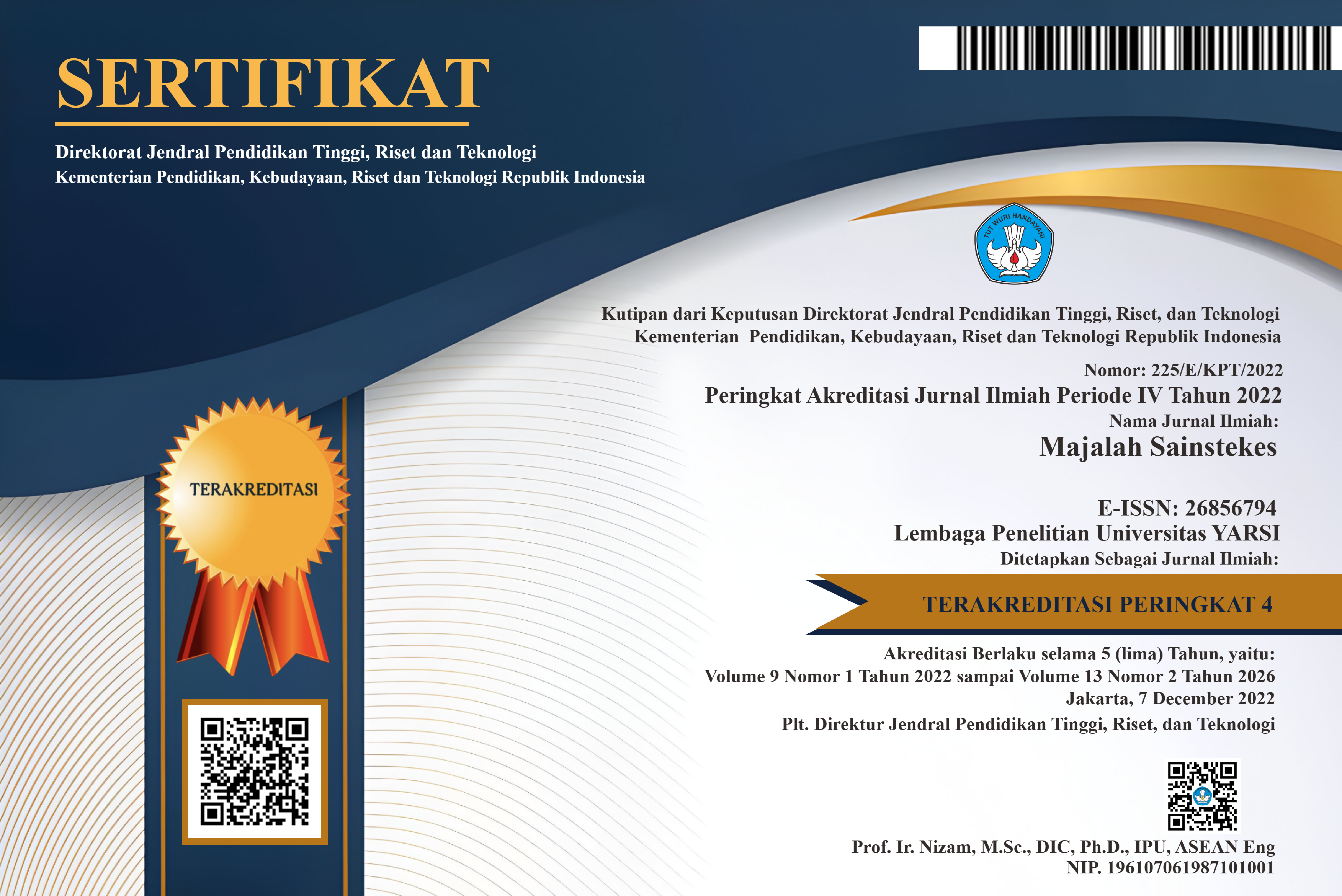Hubungan antara Diameter Optic Nerve Sheath pada Grey Scale Ultrasound dengan Peningkatan Tekanan Intrakranial pada Pasien dengan Lesi Intrakranial
Keywords:
optic nerve sheath diameter, elevated intracranial pressure, ultrasonographyAbstract
The study aims to determine the correlation between diameter of optic nerve sheath on grey scale with increased intracranial pressure in patients with intracranial lesion. The research was conducted in Radiology Department of Dr. Wahidin Sudirohusodo Makassar from January 2019 – May 2019. The sample were 39 people aged ³18 years old with intracranial lesion. Axial computed tomography (CT) examination was performed to evaluate intracranial lesions and the presence of midline shift. The diameter of the optic nerve sheath was measured using eye ultrasonography. Data analyses used Spearman’s correlation test. The results showed that there was a correlation between the dilatation of the right and left optic nerve sheath diameter with midline shift (p value 0.04; p less than 0.05) on the diameter of the right optic nerve sheath showing a weak positive relationship (p value 0.02) for the diameter the optic nerve sheath left showing a medium positive relationship where the higher the midline shift, the wider the diameter of the left and right optical nerve sheath. There is a correlation between the right and left optic nerve sheath diameter (p less than equal 0.001) showing a strong positive relationship where the wider the diameter of the right optic nerve sheath, the wider the diameter of the left optic nerve sheath at high intracranial pressure. Statistically other results also obtained no relationship between dilatation of the diameter of the optic nerve sheath with clinical symptoms of increased intracranial pressure and type of lesion.References
Asghar, A., Madiha, H., Hussain Alia. 2015. Optic nerve sheath diameter evaluated by transorbital Sonography in healthy volunteers from Pakistan. Anaesth, Pain & Intensive Care; 19(3):14-23
Dubourg, J., Javouhey, E., Geeraerts, T., Messerer, M., Kassai, B. Ultrasonography of optic nerve sheath diameter for detection of raised intrakranial pressure: a systematic review and meta-analysis. Intensive Care Med. 2011;37(7):1059–1068. Available from: http://dx.doi.org/10. 1007/s00134-011-2224-2.
Geeraerts, T., Launey Yoann L, Martin Laurent, Pottecher Julien, Vigué Bernard, Duranteau Jacques, Benhamou. 2007. Ultrasonography of the optic nerve sheath may be useful for detecting raised intrakranial pressure after severe brain injury. Intensive Care Med. 33:1704–1711.
Hwan, K.Y., Ho Lee, J., Kun Hong, C.,Won Cho, K., Hoon Yeo, J., Ju Kang, M. Feasibility of optic nerve sheath diameter measured on initial brain computed tomography as an early neurologic outcome predictor after cardiac arrest. Acad Emerg Med. 2014;21(10):1121–1128. Available from: http://dx.doi.org/10.1111/acem.12477.
Ismail, A.2014. Transorbital Sonographic Measurement of Normal Optic Sheath Nerve Diameter in Nigerian Adult Population. Malays J Med Sci. 21(5): 24-29.
Padayachy, L., Figaji, A.A., Bullock, M.R. 2010. Intrakranial pressure monitoring for traumatic brain injury in the modern era. Childs Nerv Syst. 26:441-452.
Sadoughi, A., Rybinnik, I., Cohen, R. 2013. Measurement and Management of Increased Intrakranial Pressure. The Open Critical Care Medicine Journal, 2013, 6, (Suppl 1: M4) 56-65.
Si Un Lee, Jin Pyeong Jeon, Hannah Lee, Jung Ho Han, Mingu Seo, Hyoung Soo Byoun, Won-Sang Cho, Ho Geol Ryu, Hyun-Seung Kang, Jeong Eun Kim, Heung Cheol Kim, Kyung-Sool Jang. 2016. Optic nerve sheath diameter threshold by ocular ultrasonography for detection of increased intrakranial pressure in Korean adult patients with brain lesions. Medicine. 95(41):e5061
Smith, M. 2008. Monitoring Intrakranial Pressure in Traumatic Brain Injury. International Anesthesia research Society.106(1):240-248.

 Tatok Rudiharto
Tatok Rudiharto












